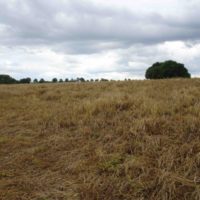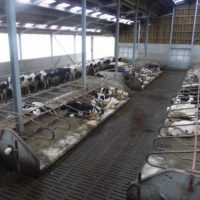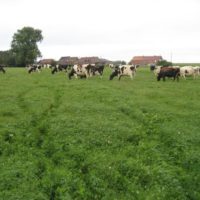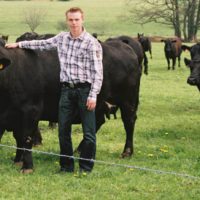Description
The production system is exclusively based on grass and grazing and is very economical.
An overall consistency of the system is aimed at with a search for optimization of working load. The farmer seeks forage autonomy, he applies a very high load and produces in Organic Agriculture (without nitrogen). He uses crossbreeding to have more rustic animals and aims to move into a mono-milking system.
Reason for the innovation
The strategy of the farmer goes through the reduction of food costs.
Grazing management and optimization help to achieve good economic efficiency.
He has chosen organic farming by conviction since his installation with the will to reduce the work time (partial mono-milking).
Farm description
Environment
- Soil: Sandy, clayey-loam
- Climate: Temperate oceanic climate
- Altitude: 130m
Grassland management
- Grazing management type: rotational
- Length: 10 months/year
- 100% of the grasslands are grazed
- Fertilization: organic only (12 t/ha) for mowed grasslands
- Dominant grass and legume species in grasslands: Perennial Rye-Grass, Tall Fes-cue, White Clover, Cocksfoot, Meadow grass, Meadow soft grass…
- Forage conservation type: Hay, silage
Structure
- Annual Work Unit: 1,1
- Agricultural Area : 58.6 ha UAA
- Production system based on grass (58.6 ha of permanent grasslands)
- Farm type: Specialist organic milk production
- Breed: Crossbreeding (Jersiais/Rouge Sué-dois/Prim’Holstein)
- Livestock Unit: 100 (77 dairy cows)
- Stoking rate: 1.76 LU/ha main forage area
Animal performance
- Milk production per head: 4 000 L/year
Why it is working
The innovation works thanks to a good technical proficiency. The farmer participates in the « PNR » and the observatory of grass growth network.
The farmer is willing to experiment things and ensures the consistency of the system.
He has numerous exchanges with groups of other farmers and participates in online discussion groups (CIVAM, Facebook, experienced tutors).





